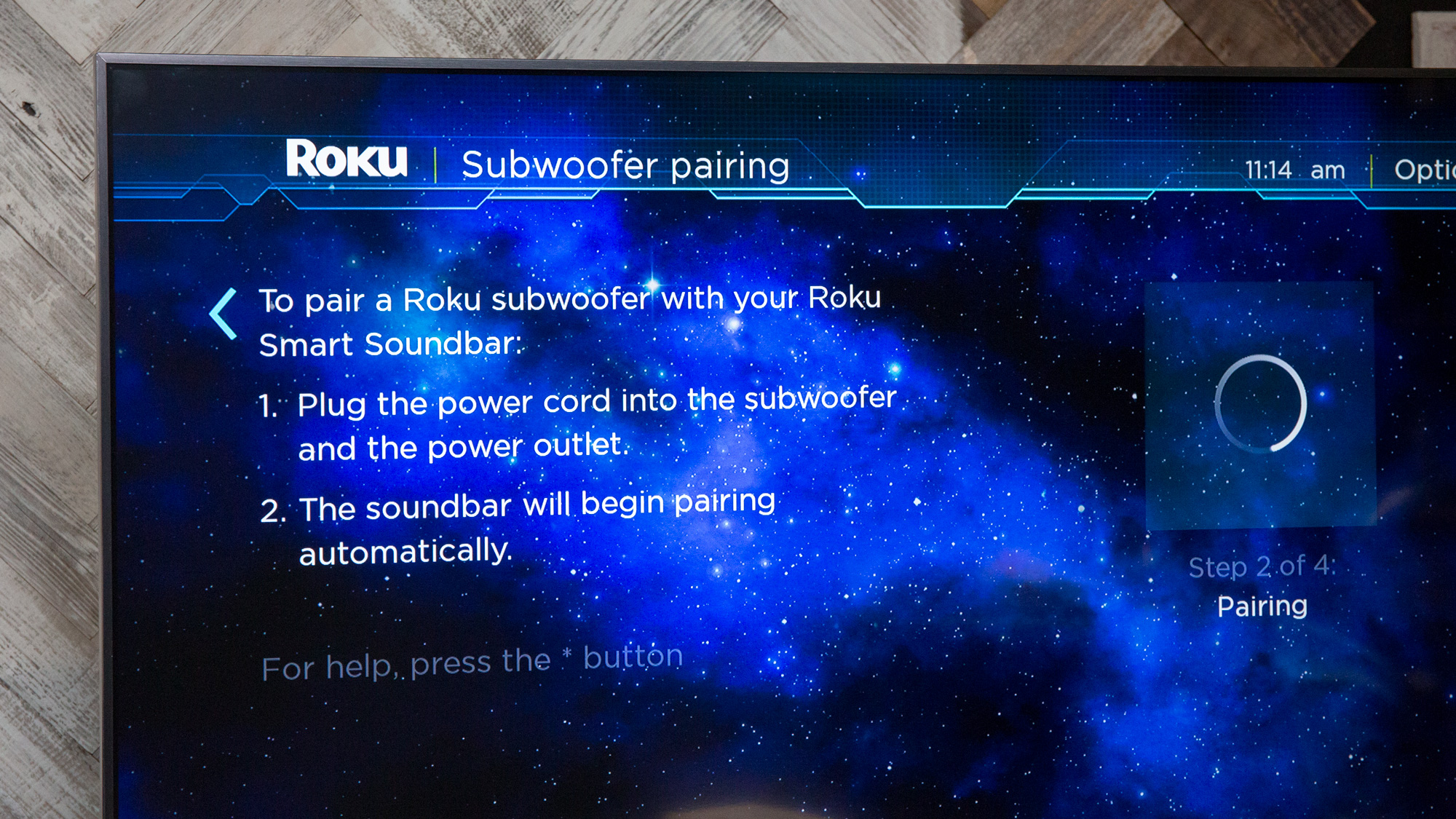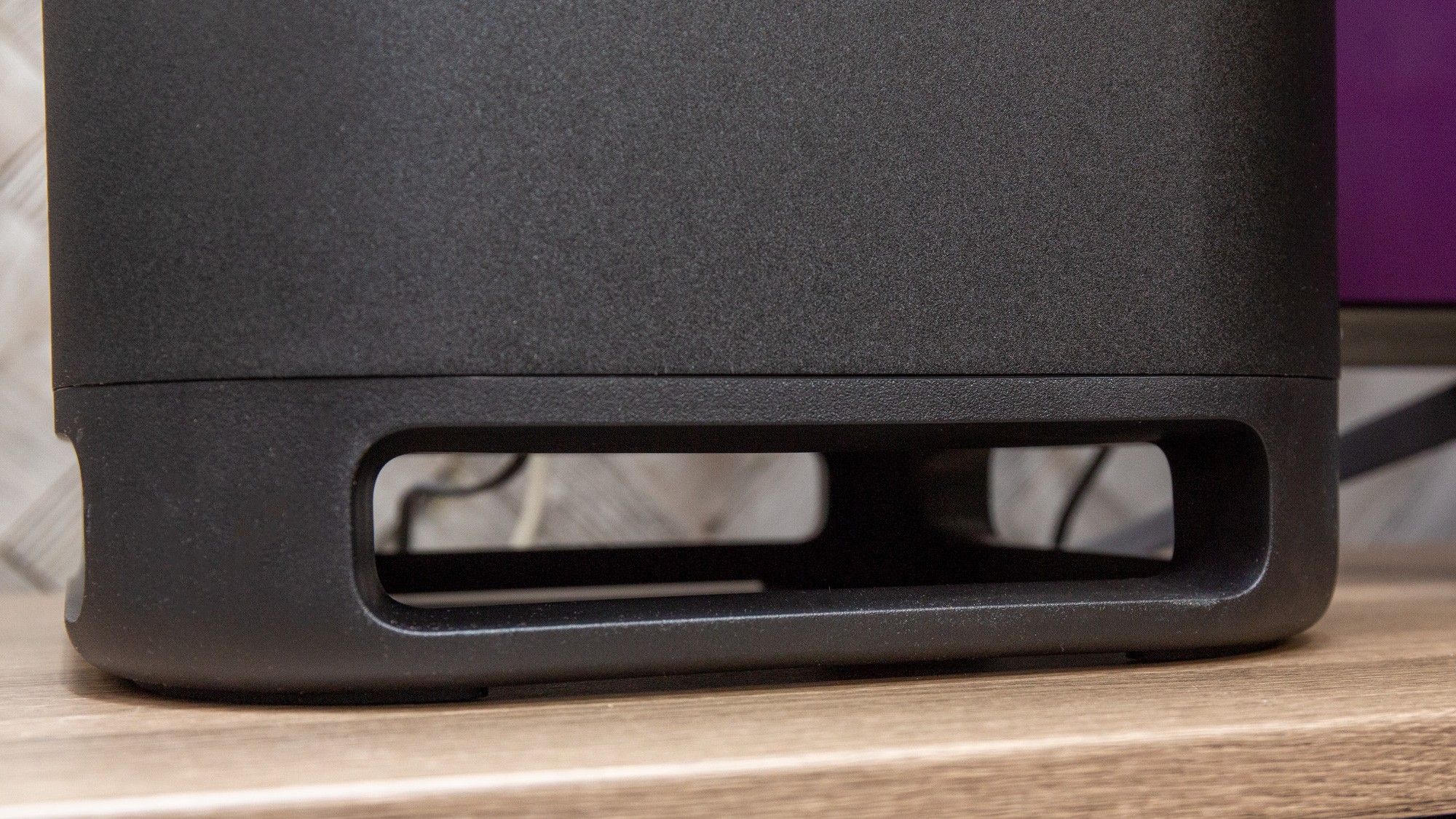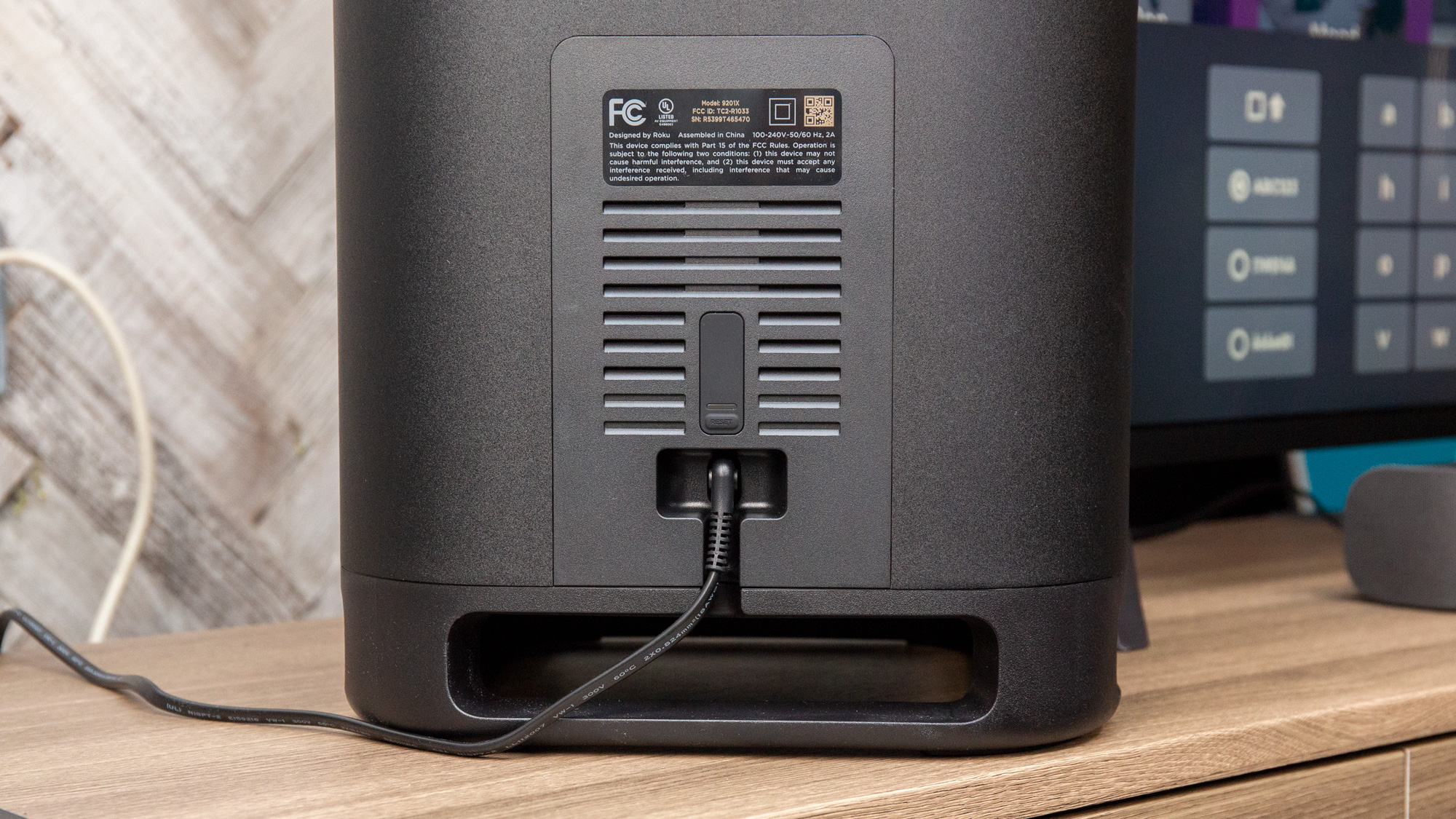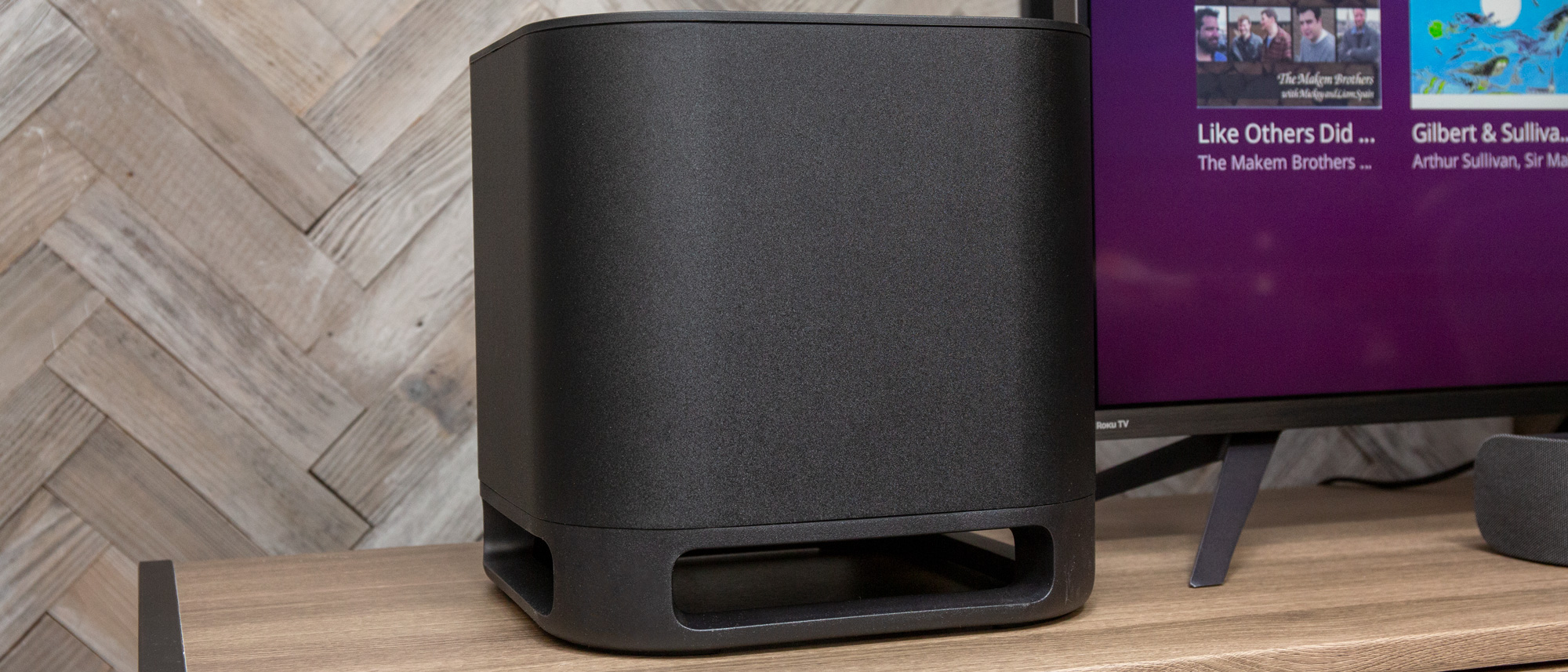Why you can trust Tom's Guide
Between the Roku Wireless Speakers and the Roku Smart Soundbar, the great granddaddy of streaming gadgets has made a sizable foray into audio recently. But there's one thing that neither the speakers nor the soundbar can do: provide room-shaking bass. Enter the Roku Wireless Subwoofer ($180), which — well, it's a subwoofer. It connects to your audio setup wirelessly. And it's from Roku. That about sums it up.
Truthfully, there's not that much to say about the Roku Wireless Subwoofer. It's one of those "Exactly What It Says on the Tin" products, and it works exactly as it's supposed to. It's neither the cheapest nor most expensive wireless subwoofer you can get, and in my experience, it sounded pretty good.
Here's a quick and easy way to determine whether the Roku Wireless Subwoofer is a good fit for your living room: Do you have a Roku soundbar or speakers? Do you wish they provided more robust bass? Are you willing to spend $180 on that improvement? If you answered "yes" to all three questions, buy the Roku Wireless Subwoofer. If you didn't, you can probably skip it.
Here are some pros and cons, if you still need more help deciding.
Roku Wireless Subwoofer pros
First, the Roku Wireless Subwoofer is extremely easy to set up. Almost ridiculously so, in fact. You plug it in, you access the menu on your Roku soundbar/Roku OS smart TV, you select Subwoofer in the pairing menu, and that's really about it. After an initial update, it will pair within seconds. Every time you boot up your Roku device thereafter, the subwoofer will be ready to use within about 15 seconds of startup. It's very nearly foolproof.

Second, the Roku Wireless Subwoofer gives you good bass sound. I tried it with a variety of media, from explosion-heavy movies like The Thing, to everyday TV shows like Good Eats, to action-packed video games like The Outer Worlds. The subwoofer booms and vibrates with the rest of them, providing just as much "feel" as sound. This kind of robust bass isn't just good for gunfights; it also enhances the sounds of music, starship engines and even baritone speaking voices.
MORE: Roku Ultra Review — The Media Streamer to Beat
(Also, here's a pro tip from hard-won personal experience: If you live in an apartment building or row house, and worry that the subwoofer vibrations might irritate your neighbors, simply lay a few towels down underneath it. You'll still get most of the bass-y goodness without the room-shaking vibrations.)

Finally, it's not nearly as expensive as wireless subwoofers get. One hundred and eighty dollars is a lot of money, but wireless subwoofers of this size (and weight — the device measures 15.7 x 14.5 x 14.5 inches, and weighs 17.2 pounds) tend to run anywhere between $300 and $700. I doubt the Roku Wireless Subwoofer provides that kind of premium bass, to be fair, but for the price, it's pretty powerful and aurally pleasing.
Roku Wireless Subwoofer cons
The biggest strike against the Roku Wireless Subwoofer is it's compatible with only the Roku Smart Soundbar ($180) and the Roku Wireless Speakers ($200). It's worth noting here that the soundbar is compatible with any TV; the wireless speakers work only with Roku OS smart TVs, which themselves represent an additional expense. The subwoofer isn't really a stand-alone $180 gadget; it's going to cost at least $360 (at the time of writing, $330 — Roku is offering a price break if you buy the soundbar and subwoofer together).

There's also the lack of customization options, which is a big strike against the device. Granted, a subwoofer doesn't need as many equalization or profile options as, say, a set of speakers, but it's disappointing that there is absolutely nothing you can do with the Roku Wireless Subwoofer aside from plugging it in. In the Roku OS, you can boost, reduce or remove bass — but you could do that even without the subwoofer attached. There are no positioning options, which is a huge pain, since corners and enclosures — common entertainment center features — can alter subwoofer sound a lot. And there's no volume dial or on/off switch, which makes turning it off late at night a bit of a process.
MORE: How to Use Roku - Tips, Tricks and Solutions for Your Streaming
Finally, while this isn't necessarily a con, it's worth pointing out that the subwoofer is very much a luxury item. Technically, the soundbar and speakers are luxury items, too, but those at least solve the real problem of flat-screen TVs that are too thin to contain high-quality speakers. But the Roku soundbar and wireless speakers already provide very good bass sound. The subwoofer adds a visceral, tactile dimension to the sound, which is worthwhile for some audiophiles — but it's not something that everyone needs. That's especially true if your TV tastes tend toward sitcoms, dramas and other dialogue-heavy fare; in such cases, a subwoofer won't add much.
Bottom line
The Roku Wireless Subwoofer is good at what it does, particularly when it comes to action movies, music and video games. However, you need to have already purchased a Roku soundbar or wireless speakers. Consider this one a "maybe," but see if you can pump up the bass on your default speakers first.
Marshall Honorof is a senior editor for Tom's Guide, overseeing the site's coverage of gaming hardware and software. He comes from a science writing background, having studied paleomammalogy, biological anthropology, and the history of science and technology. After hours, you can find him practicing taekwondo or doing deep dives on classic sci-fi.


